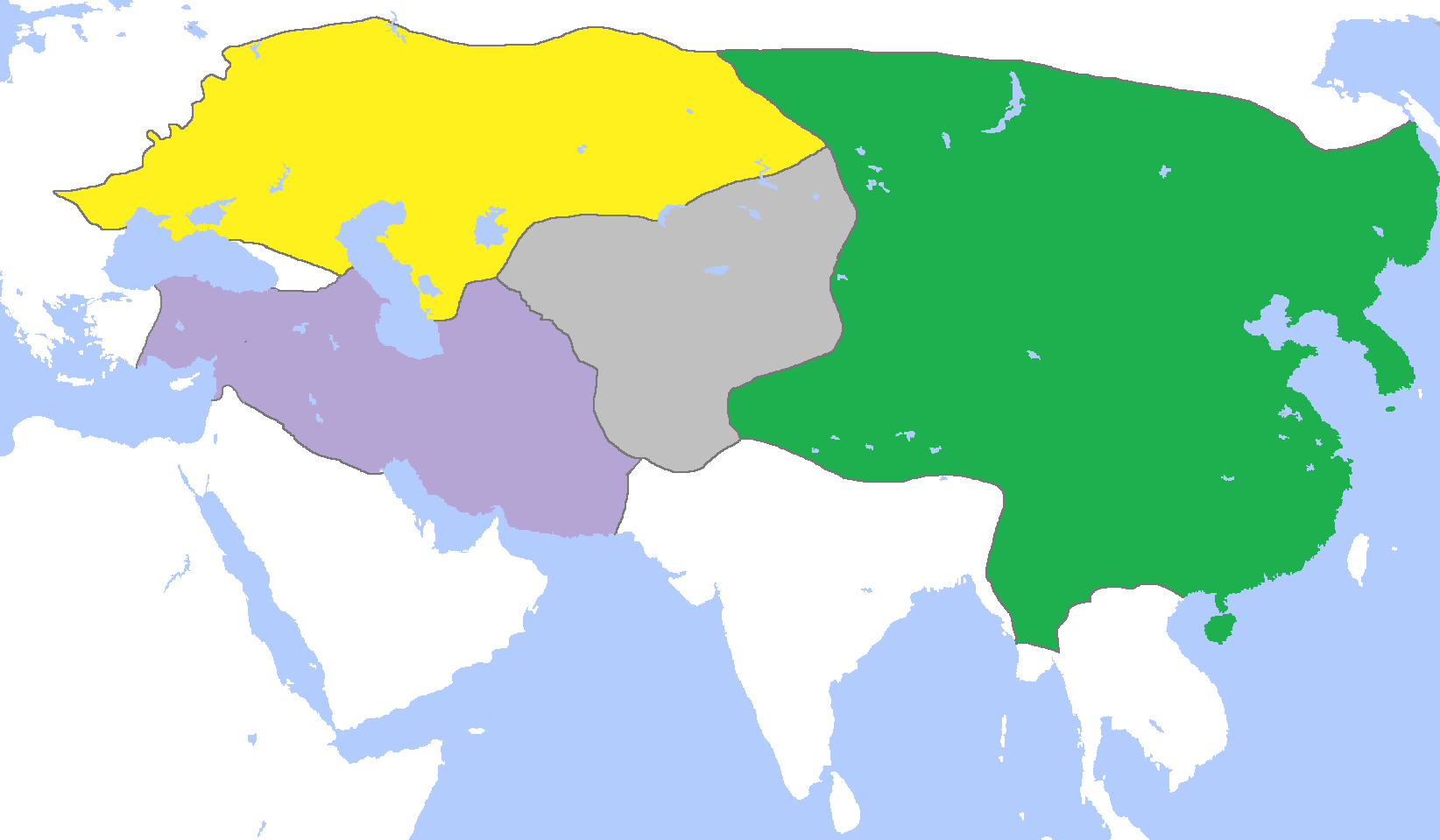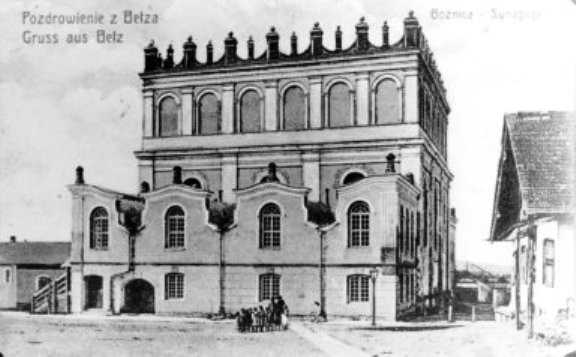|
Narymunt
Narimantas or Narymunt (baptized ''Gleb''; 1277 or just before 1300 (according to Wasilewski 1992) – 2 February 1348) was a Lithuanian duke and the second eldest son of Gediminas, Grand Duchy of Lithuania, Grand Duke of Lithuania. During various periods of his life, he ruled Pinsk and Polotsk. In 1333 he was invited by Novgorod's nobles to rule and protect territories in the north, Staraya Ladoga, Ladoga, Oreshek and Korela. He started the tradition of Lithuanian mercenary service north of Novgorod on the Swedish border that lasted until Novgorod's fall to Moscow in 1477. About 1338, the Golden Horde took him as a prisoner. The Muscovite ruler, Ivan Kalita, ransomed him from Tatars, keeping him as hostage in Moscow for a few years. Narimantas supported his brother Jaunutis when he was deposed by Algirdas and Kęstutis in 1345. In order to avoid getting killed by his younger brothers, he escaped Vilnius in autumn 1344. Narimantas travelled to Jani Beg, Khan of the Golden Horde ... [...More Info...] [...Related Items...] OR: [Wikipedia] [Google] [Baidu] [Amazon] |
Pinsk
Pinsk (; , ; ; ; ) is a city in Brest Region, Belarus. It serves as the administrative center of Pinsk District, though it is administratively separated from the district. It is located in the historical region of Polesia, at the confluence of the Pina (river), Pina River and the Pripyat (river), Pripyat River. The region was known as the Pripet Marshes, Pinsk Marshes and is southwest of Minsk. As of 2025, it has a population of 124,008. The historic city has a restored city centre, with two-storey buildings from the 19th and early 20th centuries. The centre has become an active place for youths of all ages with summer theme parks and an association football stadium, which houses the city's football club, FC Volna Pinsk. History Timeline up to WWI *1097 – the first mention of Pinsk * 1241 – transfer of the Eastern Orthodox Church, Orthodox diocese from Turov, Belarus, Turov * 1316 – after this date, Pinsk was incorporated into the Grand Duchy of Lithuania * 1396 – a Cat ... [...More Info...] [...Related Items...] OR: [Wikipedia] [Google] [Baidu] [Amazon] |
Battle Of Strėva
The Battle of Strėva, Strebe, or Strawe was fought on 2 February 1348 between the Teutonic Order and the pagan Grand Duchy of Lithuania on the banks of the Strėva River, a right tributary of the Neman River, near present-day Žiežmariai. Chronicler Wigand of Marburg publicized this battle as a great victory for the Knights: he claims that some 18,000 Lithuanians were killed or drowned while only 8 knights and 60 other soldiers died on the Order's side. Narimantas and Manvydas, two sons of Gediminas, Grand Duke of Lithuania, are thought to be killed in the battle. Campaign and battle In 1347, the Teutonic Knights saw an influx of crusaders from France and England, where a truce was made during the Hundred Years' War. Their expedition started in late January 1348, but due to bad weather, the bulk of the forces did not proceed further than Insterburg. A small army led by Grand Commander and future Grand Master Winrich von Kniprode invaded and pillaged central Lithuania (proba ... [...More Info...] [...Related Items...] OR: [Wikipedia] [Google] [Baidu] [Amazon] |
Family Of Gediminas
The family of Gediminas is a group of family members of Gediminas, Grand Duke of Lithuania (ca. 1275–1341), who interacted in the 14th century. The family included the siblings, children, and grandchildren of the Grand Duke and played the pivotal role in the history of Lithuania for the period as the Lithuanian nobility had not yet acquired its influence. Gediminas was also the forefather of the Gediminids, Gediminid dynasty, which ruled the Grand Duchy of Lithuania from 1310s or 1280s to 1572. Gediminas' origins are unclear, but recent research suggests that Skalmantas (Gediminids), Skalmantas (Skolomend), an otherwise unknown historical figure, was Gediminas' grandfather or father and could be considered the dynasty's founder. Because none of his brothers or sisters had known heirs, Gediminas, who sired at least twelve children, had the advantage in establishing sovereignty over his siblings. Known for his diplomatic skills, Gediminas arranged his children's marriages to suit ... [...More Info...] [...Related Items...] OR: [Wikipedia] [Google] [Baidu] [Amazon] |
Emperor Of Byzantium
The foundation of Constantinople in 330 AD marks the conventional start of the Eastern Roman Empire, which fell to the Ottoman Empire in 1453 AD. Only the emperors who were recognized as legitimate rulers and exercised sovereign authority are included, to the exclusion of junior co-emperors who never attained the status of sole or senior ruler, as well as of the various usurpers or rebels who claimed the imperial title. The following list starts with Constantine the Great, the first Christian emperor, who rebuilt the city of Byzantium as an imperial capital, Constantinople, and who was regarded by the later emperors as the model ruler. Modern historians distinguish this later phase of the Roman Empire as Byzantine due to the imperial seat moving from Rome to Byzantium, the Empire's integration of Christianity, and the predominance of Greek instead of Latin. The Byzantine Empire was the direct legal continuation of the eastern half of the Roman Empire following the division of ... [...More Info...] [...Related Items...] OR: [Wikipedia] [Google] [Baidu] [Amazon] |
Andronikos II Palaiologos
Andronikos II Palaiologos (; 25 March 1259 – 13 February 1332), Latinization of names, Latinized as Andronicus II Palaeologus, reigned as Byzantine emperor from 1282 to 1328. His reign marked the beginning of the recently restored empire's final decline. The Turks conquered most of Byzantium's remaining Anatolian territories, and Andronikos spent the last years of his reign fighting his Andronikos III Palaiologos, own grandson in the First Palaiologan Civil War. The war ended in Andronikos' forced abdication in 1328, after which he retired to a monastery for the remainder of his life. Life Early life Andronikos was born on 25 March 1259, at Nicaea. He was the eldest surviving son of Michael VIII Palaiologos and Theodora Palaiologina (Byzantine empress), Theodora Palaiologina, grandniece of John III Doukas Vatatzes. Andronikos was acclaimed co-emperor in 1261, after his father Michael VIII recovered Constantinople from the Latin Empire, but he was not crowned unti ... [...More Info...] [...Related Items...] OR: [Wikipedia] [Google] [Baidu] [Amazon] |
Khan (title)
Khan (, , ) is a historic Turkic peoples, Turkic and Proto-Mongols, Mongolic title originating among nomadic tribes in the Eurasian Steppe#Divisions, Central and Eastern Eurasian Steppe to refer to a king. It first appears among the Rouran and then the Göktürks as a variant of khagan (sovereign, emperor) and implied a subordinate ruler. In the Seljuk Empire, Seljük Empire, it was the highest noble title, ranking above malik (king) and emir (prince). In the Mongol Empire it signified the ruler of a Orda (organization), horde (''ulus''), while the ruler of all the Mongols was the khagan or great khan. It is a title commonly used to signify the head of a Pashtun Pashtun tribes, tribe or clan. The title subsequently declined in importance. During the Safavid Iran, Safavid and Qajar Iran, Qajar dynasty it was the title of an army general high noble rank who was ruling a province, and in Mughal Empire, Mughal India it was a high noble rank restricted to courtiers. After the downfal ... [...More Info...] [...Related Items...] OR: [Wikipedia] [Google] [Baidu] [Amazon] |
Toqta
Tokhta (also spelled Toqta, Toktu, Tokhtai, Tochtu or Tokhtogha; died ) was Khan of the Golden Horde from 1291 to 1312. He was a son of Mengu-Timur and a great-grandson of Batu Khan. His name "Tokhtokh" means "hold/holding" in the Mongolian language. Early reign under Nogai Nogai Khan orchestrated a palace coup that ended with the ousting of Talabuga and his execution. Tokhta became khan in 1291 and at first he was subordinate to Nogai. However, Tokhta eventually united his supporters against Nogai and he challenged Nogai's authority in 1297, leading to a civil war. In 1299, Nogai finally defeated Nogai and stabilized the Golden Horde. Tokhta wanted to eliminate the Russian princes' semi-independence and the Russian princes grew increasing restive. As a form of submission, military service was used by the khans, but Russian auxiliary troops were only used in rare attacks in Poland and Hungary, as well as in military campaigns in the Caucasus. Russian troops remained eff ... [...More Info...] [...Related Items...] OR: [Wikipedia] [Google] [Baidu] [Amazon] |
Ruthenians
A ''Ruthenian'' and ''Ruthene'' are exonyms of Latin language, Latin origin, formerly used in Eastern and Central Europe as common Ethnonym, ethnonyms for East Slavs, particularly during the late medieval and early modern periods. The Latin term was used in medieval sources to describe all Eastern Slavs of the Grand Duchy of Lithuania, as an exonym for people of the former Kievan Rus, Rus, thus including ancestors of the modern Belarusians, Rusyns and Ukrainians. The use of ''Ruthenian'' and related exonyms continued through the early modern period, developing several distinctive meanings, both in terms of their regional scopes and additional religious connotations (such as affiliation with the Ruthenian Greek Catholic Church). In medieval sources, the Latin term was commonly applied to East Slavs in general, thus encompassing all endonyms and their various forms (; ). By opting for the use of exonymic terms, authors who wrote in Latin were relieved from the need to be specific ... [...More Info...] [...Related Items...] OR: [Wikipedia] [Google] [Baidu] [Amazon] |
Patrikas
Patrikey Glebovich or Patrikas Narimantaitis (, Finnish: ''Patrika Narimantinpoika'') was a grandson (or great-grandson) of Gediminas who exchanged his lands in and near Starodub in Siveria for the Korela and Oreshek fortresses in the Novgorod Republic. He also founded the town of Yamskaya krepost (Yamburg) (now Kingisepp) near Pskov. His male line descendants include the Golitsyn, Kurakin, and princely houses of Russia. Life Patrikas was born sometime around 1340 and died after 1408, which is the last time he is mentioned in any source. Genealogical literature usually reports that his mother was a khatun from Crimea. An 18th-century author claims that her father was khan Tokhta, Batu Khan's great-grandson, and her mother was Maria Palaiologina, a bastard daughter of Andronikos II Palaiologos. Patrikas' wife was named Helena (see ES by Schwennicke; and Ikonnikov). In 19th century genealogical literature about him there has arisen a controversy as to who was Patrikas' father ... [...More Info...] [...Related Items...] OR: [Wikipedia] [Google] [Baidu] [Amazon] |
Belz
Belz (, ; ; ) is a small city in Lviv Oblast, western Ukraine, located near the border with Poland between the Solokiya River (a tributary of the Bug River) and the Richytsia stream. Belz hosts the administration of Belz urban hromada, one of the hromadas of Ukraine. Its population is approximately Origin of name There are a few theories as to the origin of the name: * Celtic – ''belz'' (water) or ''pelz'' (stream), * German – ' (fur, furry) * Old Slavic and the Boyko dialect – «белз» or «бевз» (muddy place), * Old East Slavic – «бълизь» (white place, a glade in the midst of dark woods). The name occurs only in two other places, the first being a Celtic area in antiquity, and the second one being derived from its Romanian name: * '' Belz'' (department Morbihan), Brittany, France * '' Bălți'' (/''Beljcy'', also known in Yiddish as ''Beltz''), Moldova (Bessarabia) History Early history Belz is situated in a fertile plain which tribes o ... [...More Info...] [...Related Items...] OR: [Wikipedia] [Google] [Baidu] [Amazon] |







